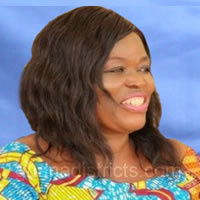The data in the table above indicate that 88.4% of the population is within the MOESS/GES criterion of a walking distance of not more than 5kms for primary school pupils. Nearly 75% of the population has access to junior secondary schools within 5kms.
However within the regional context the district compares unfavourably with ten (10) others, six (6) of which have at least 20% of their population with a primary school in the locality. The situation is even worse with regard to junior secondary schools where S.M.A is behind 12 other districts.
In terms of senior secondary school, only 27.3% of the population is within 5kms from a facility. This is very low in view of the fact that only two of the institutions have boarding/hostel facilities. This means students who hail from long distance and who cannot afford the boarding fee may be denied education. In any case the boarding/hostel facilities are limited.
Number of Institutions
The institutions are either publicly or privately owned. There have been increases in the numbers at all the levels over the 2006 – 2009 periods .
At the pre-school (kindergarten) level the total number of institutions rose from 113 in 2006 to 158 representing about 40%. The greater part of the increase has been from the public sector, 57 to 97 schools (70% rise) as result of the government’s policy of making pre-schools integral part of basic education.
However, the increase in the number of primary schools from 186 to 199 (2.7%) was solely due to the rise in the number of privately – own schools.
Two (2) junior high schools had to be closed down due very low enrolment figures while the primary school was closed as a result of the existing block being unsuitable for occupation.
Enrolment and Gender Parity
Enrolment levels were mixed in respect of both comparisons within the public sector or between the public and private sectors.
With the exception of pre – schools which registered a significant rise from 6781 in 2005/2006 to 9298 (37.1%) over the 2006 – 2009 period public basic school enrolment did not experience any significant changes.
Primary schools enrolment recorded only a marginal increase of 0.6% in 2007, 0.8% in 2008 and a decline of 1.75% in 2009 using 2006 as the base year with 25,071.
With an enrolment of 7751 in 2005/2006 JHS enrolled increased only by 3.7%, 3.1 and 5.0% respectively.
The changes in KG enrolment using 2005/2006 (with 3406) as the base year were -17.9 (2007), 7.0% (2008) and -17% (2009). The decline in enrolment in private schools was due to the opening of more public ones.
At the end of 2006-2009 plan periods, total private school enrolment had jumped by 42:3% compared to 2006. However, in between 2006 and 2009, there were a decline of 18.4% (2007) and a rise of 52.2%.
The Gender Parity Indexes in private schools over the period 2006 – 2009 looked far better than those in the public institutions.
Staffing in Public Basic Schools
There were increases in the absolute number of trained teachers at all levels of public basic schools. This came about mainly due to the posting of more professional teachers as well as the Municipal Assembly’s Support for selected teacher trainees who are obliged to serve in the district for 3 years after their qualification.
A total of 142 teacher trainees were supported by the Suhum Municipal Assembly during the 2006 – 2009 period. However, the number of untrained teachers also went up. This led to a situation where by the percentage of trained teachers declined in many cases.
Performance in the Basic Education Certificate Examination (B.E.C.E)
The performance in the Basic Education Certificate Examination has not been encouraging over the years with the average pass in percentage terms hovering around 40%.
The pass rates for the plan period of 2006-2009 were respectively 40.9%, 39.7%, 39.1% and 42.4%. Those for girls were even lower being 36.3%, 37.3%, 37.3% and 40.5%.
The Main Reasons for this Situation are the Following Among Others.
• Poor infrastructure (schools under trees and in dilapidated structures.
• Teacher absenteeism and lateness due to non – residency of teachers in their stations
• Poor attitude of many parents toward the education of their children:
• Refusal or inability to provide them with exercise books or seeing to it that they go to school and do their homework.
Poor attitude of Pupil/Candidates
Some pupils engage in economic activities such as carrying illegal lumber or trading during school hours.
Some candidates (i.e. pupils who have been registered for the examination) deliberately absent themselves from classes in order to earn some money for immediate post – examination festivities).
Some female candidates get pregnant before the examination and are therefore not in the right condition to perform well.
The performance in 2009 which was more than 3% higher than that of 2008 could be attributed partially to a more stringent supervision.
Second Cycle Education
The Assembly has four public senior high schools at Suhum (3) and Coaltar (1) (There is no privately run senior high school). Thus only two of the six sub-districts have these facilities.
A vocational training center for women is run by the Department of Community Development at Suhum. Nankese has a privately run technical school and Suhum a commercial school.
The state of infrastructure in respect of basic school is not satisfactory. Most primary and junior high schools are in dilapidated buildings and some under sheds and trees.
There is a positive link between the number of dilapidated schools and the population of the sub-district: Suhum and Coaltar sub- district with the highest population have the highest percentage in respect of kindergarten and primary schools 23.4% and 24.6% and 27.0%, 29.0% respectively.
This phenomenon is respected when one looks at the overall total with Coaltar having 24.3% and Suhum 27.8%. Nankese sub – district with the smallest population size had only 6.43% of the dilapidated structures and schools under trees.
Developments in the 2006 – 2009 Periods
There were some interventions in the rehabilitation / replacement of basic school blocks started in the pre-2006 period but were not completed before Dec. 2009 and had to be rolled over into the plan period. These were mostly DACF and HIPC projects as well as few projects under SIF.
Other interventions came under the CBRDP, European Union/ Government of Ghana 6th Micro-Projects Programme, GET Fund and SIF. These added to the replacement of many dilapidated structures.
Sanitary Facilities
Some basic schools were provided with safe toilets, urinals and hand washing facilities during the period by DANIDA and 6th Micro-Projects Programme. However less than 30% of all basic schools have standard sanitary facilities though the policy now is that all new constructions must include these facilities.
Development Partners
The Development Partners of the municipality include the Hunger Project, DfID, USAID, DANIDA, UNESCO and WVG. Their areas of operation are support for infrastructure development, support for teaching and learning and provision of furniture.
The Municipal Directorate (Municipal Education Office)
The Directorate is headed by a Director and Staff made up of teaching (professional teachers) and non-teaching officers. It has 4 units headed by Assistant Directors - Supervision, Planning, Human Resource Management Development (HRMD) and Finance and Administration.
Co-ordinators
There are also co-ordinators for girls’ education, school health education, sports, culture, community participation, special education, basic education and private schools..
Organs that Support Education Delivery in the District
The following bodies manage/ support education delivery at other district for community levels:
• Municipal Education Organization oversight committee (MEOC) chaired by the Municipal Chief Executive
• Municipal Education Planning Team (MEPT)
• School Management Committee (SMCs)
• Parent – Teachers Association (PTAs)
Accommodation
The Municipal Directorate faces challenges with respect to office accommodation for it is located within the Central Administration of the District Assembly in 10 rooms. Offices are thus congested with some having no individual desks. However, efforts are under way to put up a separate block for the Office
Key Development Challenges
1. Poor educational infrastructure situation – dilapidate school block and absence of safe toilet facilities and urinals in most schools.
2. Poor attitude towards works on the part of many teachers
3. Poor parental supervision and support for children
4. Poor attitude of pupils to their studies and indiscipline in general
5. Lack of decent accommodation for teachers in the remote areas
6. Lack of social amenities especially electricity to attract teachers to stay in rural communities
Sports Development
Sports development in the municipality at the moment is inadequate. The most important sports in the country, football is on the decline in the municipality. The assembly has no presentation in the premier or Division One League. The major challenges facing the development of soccer in the municipality are:
• Inadequate facilities
• Sub-standard playing fields and equipment as well as
• Financial sponsorship.
Other sports such as basketball, volleyball, table tennis and hockey are less restricted to school sports for lack of facilities for the public.
Date Created : 11/27/2017 3:40:05 AM






 facebook
facebook twitter
twitter Youtube
Youtube TOLL FREE 0800 430 430
TOLL FREE 0800 430 430 +233 593 831 280
+233 593 831 280 GPS: GE-231-4383
GPS: GE-231-4383 info@ghanadistricts.com
info@ghanadistricts.com Box GP1044, Accra, Ghana
Box GP1044, Accra, Ghana